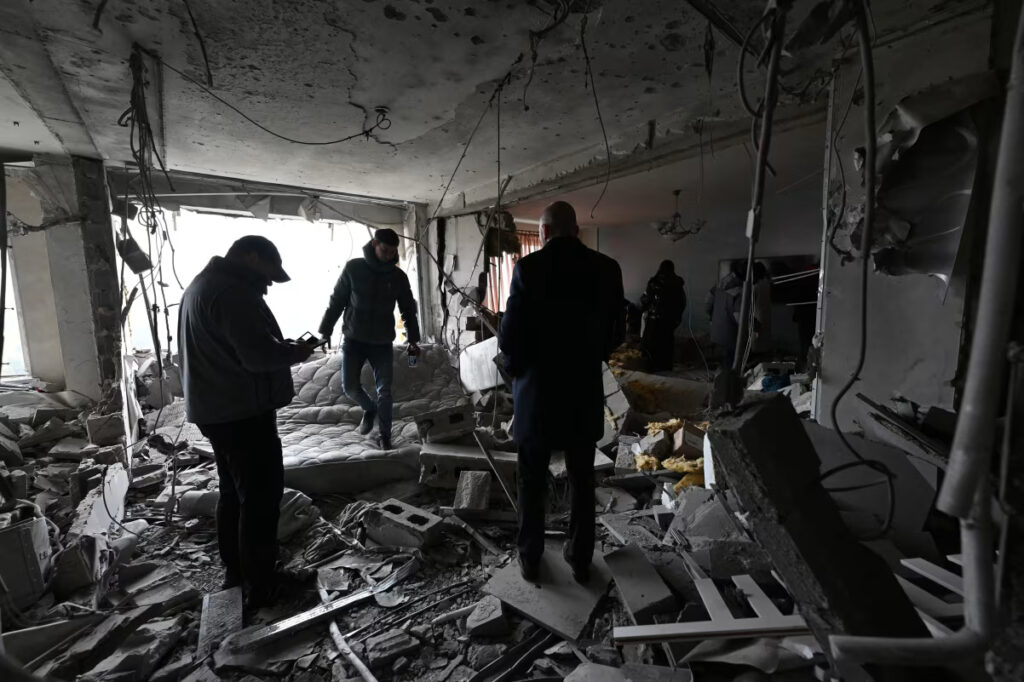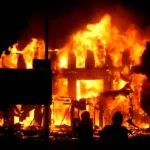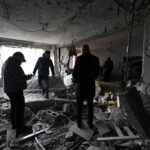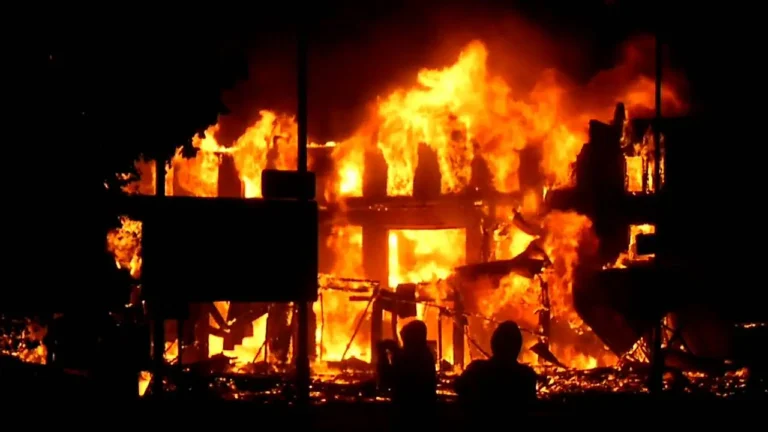
Improvise and innovate have become the watchwords for both the Russian and Ukrainian militaries as they try to outwit each other on the ground, at sea and in the air.
Several recent developments illustrate this constant evolution of tactics and weaponry: a new Russian jet-powered bomb, the Ukrainian use of light planes as long-range ‘suicide bombs,’ and a fresh generation of maritime drones.
Both countries are exploiting AI, robotics and unmanned systems at a high tempo.
But some innovations are remarkably low-tech.
As night fell on one Ukrainian airfield earlier this month, a small group of men assembled a pilot-less light plane for a 2,000-kilometer (1,243-mile) mission deep into Russia. Its target was in the Russian industrial city of Dzerzhinsk, about 230 miles east of Moscow.
Strapped to its undercarriage was a very basic bomb.
Hours after the single-engined plane took off into the night sky, a large fire was reported at an explosives factory in Dzerzhinsk that makes shells for the Russian military.
The program was created by an aviation enthusiast with the call-sign Goronych and converts single-seater planes into rudimentary but effective long-range missiles. Instead of a pilot’s seat, there is an additional fuel tank and batteries that power navigation and communication systems, according to a report by the Ukrainian outlet Babel that CNN has confirmed.
Goronych and his group are now integrated into the 14th regiment of Ukraine’s special operations forces, who spoke with CNN about their work. On Wednesday, according to the Ukrainian military, they were involved in an attack on a mechanical plant in the Russian city of Saransk – nearly 800 kilometers (497 miles) from the Ukrainian border – where detonators and mines are manufactured.
The Goronych project represents one of dozens of adaptations made by both sides as the conflict has worn on – especially using light aircraft and drones.
In September, the Ukrainian military’s chief of staff, Oleksandr Syrskyi, said light aircraft mounted with machine guns were proving effective in intercepting Russian drones and the military would consider buying more.
The Russians recently began deploying small planes equipped with machine guns in occupied territory to take down Ukrainian drones on their way to targets in Russia.
Their mistake was profiling them on television.
The Ukrainian Security Service established where the planes were based and said on Tuesday that it had “neutralized two small aircraft that the occupiers stationed at airfields and used to shoot down Ukrainian long-range drones.”
Not all innovations are as basic.
In recent weeks, Russia has begun deploying a new jet-powered guided bomb, adapted from its huge stocks of old “free-fall” bombs, according to Ukrainian Defense Intelligence (DI).
“The range and combat radius of such bombs will be approximately 200 kilometers (124 miles),” said the deputy head of DI, Vadym Skybitski, in a statement.
The Russians had already been converting Soviet-era bombs into glide munitions with a range of some 80 kilometers (50 miles), allowing aircraft to fire them while staying well clear of Ukrainian air defenses. On just one day last week, nearly 300 such bombs were fired against Ukraine. The daily average is just over 100, according to the Ukrainian General Staff.
The new longer-range variant – dubbed the UMPB-5 – has already been used in strikes against Kharkiv in northeastern Ukraine in recent days. A Russian aviation blogger posted on Monday that the weapon was “already being used against the Ukrainians… Now they will put it into production and things will really heat up.”
The Ukrainians have pioneered the development of maritime drones, which have been especially effective against Russia’s Black Sea fleet. This week, the Security Service (SBU) unveiled the latest generation.
One of them was used in an attack on the bridge linking Russia and occupied Crimea in June, the SBU said. The updated models are capable of traveling more than 1,500 kilometers (932 miles), and can carry up to 2,000 kilograms (4,409lbs) of explosives. They can also carry a multiple rocket launcher system.
In the early days of the conflict, the Ukrainian military was much more agile than Russian forces in terms of adapting tactics and equipment. But over time, said defense analyst Dara Massicot, “Russian units grafted protective armor onto vehicles, learned new styles of camouflage, and adopted small-unit assault tactics, among many other adaptations.”
The Russian Defense Ministry also set up an elite drone unit called Rubikon, “which experiments with different types of tactics that now inform how other UAV units are instructed,” Massicot wrote in Foreign Affairs.
For all its innovation and a surge in domestic production of drones and missiles, Ukraine still needs a constant pipeline of weapons from its allies. Russian barrages of missiles and drones – often several hundred in one night – have again underlined its shortfall in air defenses.
Zelensky renewed calls for Western-made defenses in the wake of a deadly attack overnight on Friday into Saturday, which killed two in capital Kyiv. Ukraine is “paying special attention to the Patriot systems, so that we can protect our cities from this horror,” he said.
Russia is moving toward producing more than 6,000 Shahed-type drones each month, Ukraine’s Defense Intelligence told CNN in September.
That’s just one reason why Ukraine wants longer-range missiles – to take the war to targets such as drone factories deep inside Russia. But US President Donald Trump says that, for now, providing Tomahawk cruise missiles is off the table.
Kyiv is now pinning its hopes on Europe to beef up its capabilities. “Everyone who is now helping Ukraine with air defense systems and (the) missiles for them is protecting lives,” Ukrainian President Volodymyr Zelensky said Wednesday.
“And everyone who helps Ukraine with long-range capabilities will bring the end of the war closer,” he added.
Zelensky said he anticipated “a good and, in many ways, completely new agreement on our defense capabilities” in meetings with European allies this week.
But, with most weapons production pipelines measured over years rather than months, rapid improvisation has an important role on the battlefield.












